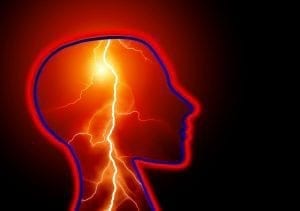Cyclin-Dependent Kinase-Like 5 (CDKL5)
What is CDKL5?
CDKL5, or cyclin-dependent kinase-like 5, is a rare genetic disorder that is characterized by severe development impairment, as well as a variety of frequent seizures that start early in life. The CDKL5 gene gives instructions on how to make a protein that is essential for normal brain development. This protein acts as a kinase, a type of enzyme that changes the activity of other proteins. So, when there is a lack of the CDKL5 protein, it can affect other bodily functions. Females are five times more likely to develop this disorder than males. However, males are usually more severely affected. While it is very rare, more cases are being diagnosed as awareness of the disease spreads.What are the symptoms of CDKL5?
Symptoms of CDKL5 include the following:- Severe, constant seizures that usually begin in the first few months of life, but can occur within hours of birth
- Significant developmental delay
- Repetitive hand movements, like wringing of or mouthing of the hands
- Tendencies to look sideways and cross legs
- Inability to walk
- Little to no ability to speak
- Poor feeding ability
- Distinctive facial features, like a high and broad forehead, deep-set eyes, widely spaced teeth, full lips, large space between nose and lip, high palate, and small head
- Teeth grinding
- Poor muscle tone
- Scoliosis
- Vision problems
- Respiratory problems
- Sleep problems
- Constipation
What causes CDKL5?
CDKL5 is a disorder caused by mutations in the CDKL5 gene. Almost all cases are a result of spontaneous mutations in the CDKL5 gene (“de novo” mutations), meaning that they can occur in people with no family history of the disorder. However, some cases of this disorder can be inherited in an X-linked dominant pattern. Human traits are inherited from a person’s father and mother; each one contributes a copy of a gene, which interacts with the other copy. Genes are located in chromosomes, which carry the genetic characteristics of individuals, and are located in the nucleus of all body cells. Humans have 23 pairs of chromosomes, and the final pair contains the sex chromosomes, the X and Y chromosomes. Human males have one X chromosome and a Y chromosome, while human females have two X chromosomes. Since the disorder is inherited in a dominant pattern, only one copy of the mutation has to be inherited for the individual to exhibit the disease. And, since females have two X chromosomes, they are more likely to inherit the disorder.How is CDKL5 diagnosed?
CDKL5 is usually suspected based on the presence of characterizing symptoms. It is diagnosed using the following procedures:- Physical exam
- Detailed patient history
- Molecular genetic testing for CDKL5 mutations
What are the treatments for CDKL5?
Current treatment for CDKL5 focuses on treating the symptoms of the disease. It includes:- A combination of anticonvulsants to help control seizures
- Vagal nerve stimulator
- Specialized diet plan
- Physical therapy
- Occupational therapy
- Speech and augmentative communication therapy
- Support for the family
- Developing a special education plan
- Alternate forms of communication (communication boards, devices, and switch activated systems to facilitate choice making and environmental access
- Bracing or surgery to treat scoliosis
Where can I find out more about CDKL5?
Add Your Heading Text HereCyclin-Dependent Kinase-Like 5 (CDKL5) Articles

UK Approves Ztalmy (Ganaxolone) for CDKL5 Deficiency Disorder
Jessica Lynn
March 18, 2024
Read More »



Global Innovation in Patient Advocacy: Navigating Clinical Trials for Rare Disease
James Moore
March 29, 2023
Read More »

Finding Balance with CDKL5 Deficiency Disorder: Whitney and Havilah’s Story (Pt. 2)
Jessica Lynn
January 5, 2023
Read More »

Finding Balance with CDKL5 Deficiency Disorder: Whitney and Havilah’s Story (Pt. 1)
Jessica Lynn
January 3, 2023
Read More »






